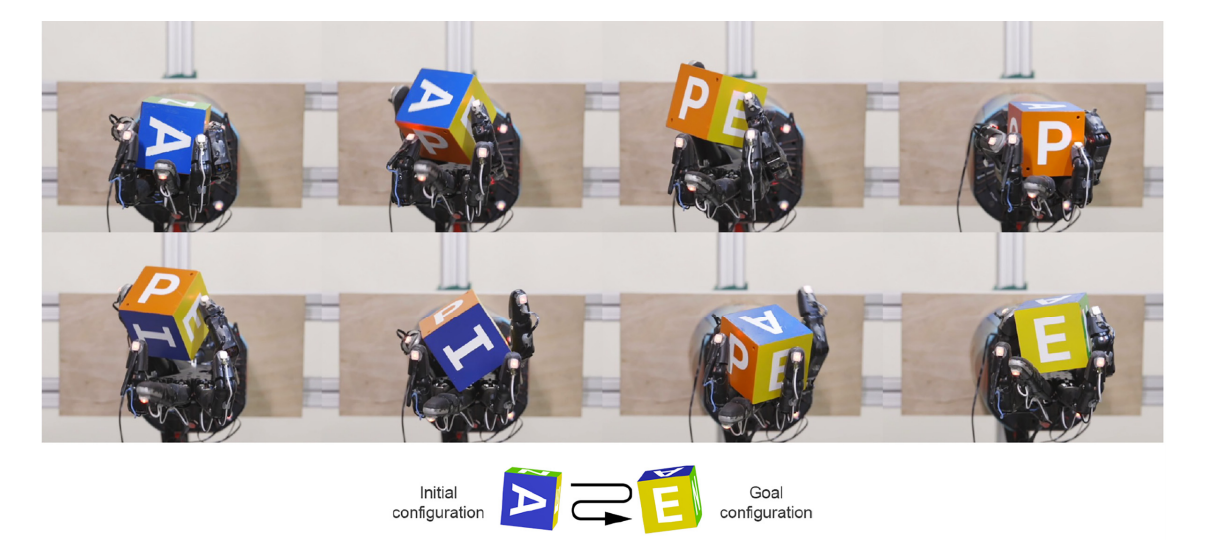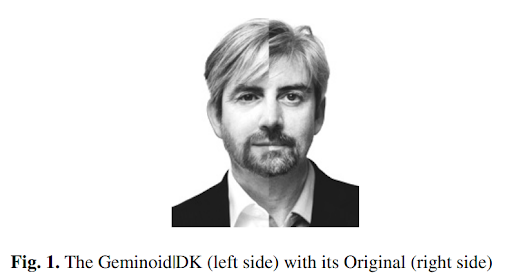PRE2020 3 Group12
Robot Appearance
Group Members
| Name | Student ID |
|---|---|
| Bart Bronsgeest | 1370871 |
| Mihail Tifrea | 1317415 |
| Marco Pleket | 1295713 |
| Robert Scholman | 1317989 |
| Jeroen Sies | 0947953 |
Relevance of robot appearance
In a social context, robots may be subject to judgement from humans based on their appearance Walters, M.L., Syrdal, D.S., Dautenhahn, K. et al. Avoiding the uncanny valley: robot appearance, personality and consistency of behavior in an attention-seeking home scenario for a robot companion. (2008). The perceived intelligence of the robot is correlated to the attractiveness of the robot since it is the case that humans make a ‘mental model’ of the robot during social interaction and adjust their expectations accordingly:
- “If the appearance and the behavior of the robot are more advanced than the true state of the robot, hen people will tend to judge the robot as dishonest as the (social) signals being emitted by the robot, and unconsciously assessed by humans, will be misleading. On the other hand, if the appearance and behavior of the robot are unconsciously signaling that the robot is less attentive, socially or physically capable than it actually is, then humans may misunderstand or not take advantage of the robot to its full abilities.”
It is thus very important to predict and attribute the correct level of attractiveness depending on the intellectual capabilities of a robot. Not only that, but humans attribute different levels of trust and satisfaction when dealing with robots, depending on how much they like it Li, D., Rau, P.L.P. & Li, Y. A Cross-cultural Study: Effect of Robot Appearance and Task. (2010). Furthermore, an anthropomorphic robot is said to be better when high sociability tasks are required Lohse M et al (2007) What can I do for you? Appearance and application of robots. In: Artificial intelligence and simulation of behaviour, which is a statement that does not lack controversy as some research did not find any conclusive evidence of this aspect Li, D., Rau, P.L.P. & Li, Y. A Cross-cultural Study: Effect of Robot Appearance and Task. (2010).
Study objective
As many have regarded the uncanny valley the pitfall of humanoid robots, there is the necessity of figuring out how the appearance should change in order to climb this valley. The answer to this research question is rather simple, namely: to become indistinguishable from humans. But the problem of this simple answer is that there is no way to quantify the similarity in appearance to the one of humans other than measuring the uncanniness of the robot using humans and surveys. Better ways need to be researched in order to predict the similarity of a robot to the one of a human, based on robot features. For this, we intend to come up with a scoring system that can accurately predict where the robot sits on the uncanny valley. We are interested in computing this score using latent variables inferred from our research.
State of the Art
Hand-and-Finger Movement
In 2018 the non-profit research company OpenAI created a realistic human-hand-shaped robotic hand with a level of dexterity similar to that of a human [1]. The system that is responsible for the movement of the robotic hand uses a reinforcement model, where the AI is trained via trial and error. The hand itself is able to grasp and manipulate objects with state-of-the-art precision. Moreover, the hand exhibits unprecedented levels of dexterity as multiple grasp types that are found in humans can also be found in its hand movements.

Realistic facial expressions and head movement: Geminoid H1, H2, F and DK
The geminoid DK is a robot with a very anthropomorphic design, created to examine how the presence, the appearance, the behavior and the personality traits of an anthropomorphic robot affects the communication with human partners. The robot mimics the external appearance and the facial characteristics of the original, being its creator and a Danish professor Hendrik Scharfe. Apart from the movements in the robot’s facial expressions and head it is not able to move on it’s own (own = remotely by the operator). The Geminoid DK does not possess any intelligence of itself and has to be remotely controlled by an operator. Pre-programmed sequences of movements can be executed for subtle motions such as blinking and breathing. Moreover, speech of the operator can be transmitted through the computer network of the geminoid to a speaker located inside the robot.

Questionnaire
Method
All participants will be asked to fill out the questionnaire. In this questionnaire, subjects will see an image of a robot, and a video of the same robot moving, for three different robots. These robots fall into three different categories: slightly humanlike, humanlike and extremely humanlike. These three categories will be illustrated by the following robots: Atlas (Boston Dynamics), Honda ASIMO (Honda), and Geminoid DK (Aalborg University, Osaka University, Kokoro & ATR) // Sophia (Hanson robotics). To ensure that confounding variables like habituation to the robot have a minimal effect on participant judgement, the order of presentation is counterbalanced. This means that half of all participants will first see the image, then the video (normal order), and the other half will first see the video, then the image (reversed order). The order in which the different robots are presented is randomized. For a visual representation, please refer to table 1.
Subject responses will be measured using the Robotic Social Attributes Scale (RoSAS), developed by Carpinella, M. et al. (2017). Each robot will be rated on its warmth, competence and discomfort. Each of these three factors contains six items on which the robot will be evaluated. See table 1 for more details.
Enterprise
Introduction: Probleem schetsen, eventueel mogelijke oplossingen aanstippen? Waarom het relevant is, waarom we er uberhaupt een oplossing voor nodig hebben Marco users, society and enterprise: Een algemene uitleg over de user geven en concrete users verzinnen en de problemen beschrijven enzo. En dan zonder je technologie te gebruiken laten zien hoe die personen zou kunnen benefitten van onze solution. Marco
Implementation details: Uitleggen hoe het bedrijf te werk zou kunnen gaan. Later komt hier ook het resultaat van de research bij Jeroen
Funding for starting the enterprise: how should we get it and for what should it be used? Robert To successfully start up the enterprise we would need to get some funding from other organizations. Organization that might want to fund the enterprise are stakeholders that would benefit from the service the enterprise offers, like a robotics manufacturer or a care home that uses robots. This funding would be mostly used to hire data analysts to develop the robot attractiveness scales and for advertisement of the company. These are necessary for the enterprise until it is able to manage and survive on its own.
Enterprise structure: hierarchy, what kind of company do we need to have? Robert The enterprise itself will consist of just a few people and will mostly be located online. Clients will be able to send in their robot designs and they would be rated and evaluated online. After the robot attractiveness scale has been created it will not quickly age and therefore we do a need for need full-time data analysts. We do need one or more employees to perform maintenance to the website/platform we will be using and one or more employees that are taking care of advertisements. Thus the body of employees will be relatively small.
Cost and profit: Evaluate the costs and profit and explain/discuss why it is a decent model for earning revenue. Robert Since the enterprise will be mostly located online we can decide against hiring or buying an office. There are a benefits to having an office, for example you can have a central meeting point, and therefore we only decide against getting an office if the profits won’t allow for it. If we do so, we might need to hire computers, which can be located anywhere, for hosting the websites and running the evaluations. We should be able to hire only specific amounts of processing power of a computer, therefore we could reduce costs. The evaluation service we offer shall not be expensive, this is because we assume most anthropomorphic robot manufacturers already have a team designated to the design of the robot. Thus we cannot ask too much money, since then they will just solely rely on the designated team for design evaluation. However, making little profit is not necessarily bad, since the costs for maintaining the enterprise and performing the evaluation are also very low.
Aspect of the platform used by clients: waarom het platform goed werkt voor onze target users. Jeroen
Papers and summaries
The papers that were read and summarized fit into three categories, namely: remote physical therapy, robot appearance, and robot physics. Below are the three categories together with their respective papers for each team member:
1. Remote physical therapy
Mihail Tifrea
2. Robot appearance
Bart Bronsgeest
Bartneck, C. et al. (2009). My Robotic Doppelgänger - A Critical Look at the Uncanny Valley
Breazeal, C. & Scassellatie, B. (2002). Robots That Imitate Humans.
Pantic, M. et al. (2007). Human Computing and Machine Understanding of Human Behavior: A Survey.
Adams, B. et al. (2000). Humanoid Robots: A New Kind of Tool.
Mihail Tifrea
Marco Pleket
Robert Scholman
Jeroen Sies
Bar-Cohen, Y., & Breazeal, C., (2003). Biologically inspired intelligent robots.
